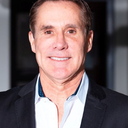I have a pocket of fat which is generic under my chin and around my jaw, I have no jaw definition and I have fat under my chin. The only cosmetic procedure I've ever wanted done on my face has been chin liposuction but I am scared of risking having an exposed platysma or lumpiness. How common are these risks and what can I ask my surgeon to do to prevent these risks? What other important questions should I ask my surgeon? Thank you
Answers (5)
From board-certified doctors and trusted medical professionals

Dr. Michael P. Morrissette, DDS, FACS
Board Certified Oral & Maxillofacial Surgeon
Answer

Dr. Jason Emer, MD
Dermatologic Surgeon, Board Certified in Dermatology
Answer
Dr. Mats Hagstrom, MD (license on probation)
Board Certified Plastic Surgeon
Answer
More Chin Liposuction Questions
See all Chin Liposuction Q&AWE SEND PRETTY
EMAILS
What’s trending? Who’s turning heads? Which TikTok myths need busting? We’ve got you. No fluff, no gatekeeping—just real talk. Get our free, unfiltered newsletter.
